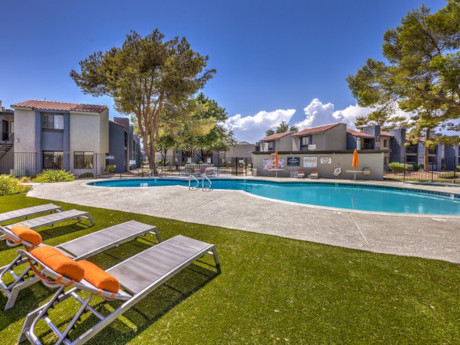By Jared Glover, Director of Investment Sales, Berkadia
The Las Vegas multifamily market started to feel the effects of higher interest rates alongside persistent inflation as the third quarter ended. Thankfully, properties still experienced trade-outs and overall in-place rent growth, though year-over-year growth began to moderate, coming in near 8 percent. Loss to lease capture remains, although at a slower pace than prior quarters, with average market rent at $1,515. The third quarter also saw a 3 percent decrease in occupancy, setting at 93.6 percent, after experiencing record occupancy throughout 2021.
On the transaction front, we have seen a dramatic shift in cap rates. This is a direct result of the Fed’s tightening. Within a six-month span, cap rates widened upwards of 150 basis points — from low to mid-3s to 5 and trending up, depending on product type. The homogenous nature of national cap rates in 2021, with most markets trading in the 3.5 range, seems to have shifted back to historical norms as the primary/coastal markets once again demanded a premium versus secondary or tertiary markes.
Both Monterra and the Boulevard traded north of a 5 cap on in-place numbers, speaking to these latest cap rate trends. Just four months ago, a similar vintage deal traded right at a 3 percent cap. The third quarter also saw two build-to-rent transactions, both forward purchases of townhome communities at Certificate of Occupancy. Haven Realty Capital acquired its first tranche of townhomes, Townes at Peaceway, for $380,000 per unit and Banyan Residential closed on its first tranche, Banyan Brighton, for $485,000 per unit.
Although the market is experiencing a shift, underlying fundamentals remain strong. This is buoyed by Las Vegas’ reticence to overbuild on both the multifamily and single-family sides. In a balanced market, one single-family permit is typically issued for every two jobs. Las Vegas is currently adding 5.2 jobs per every single-family housing permit.
According to Homebuilders Research, homebuilders pulled just 539 single-family permits in September, a 54 percent decrease year-over-year. This brought the 2022 totals to just 9,450 homes. Multifamily deliveries currently sit at roughly 1,000 units per quarter, equating to less than 2 percent of total annual stock. Most of that supply is concentrated in two major submarkets, the Southwest Curve and South Las Vegas Boulevard/West Henderson, supporting two of the major employment growth hubs.
The UnCommons project in the Southwest Curve continues to draw strong credit tenants like DraftKings, Morgan Stanley, BDO and others with its initial 300 units of multifamily on track to begin pre-leasing next year. Nearby, Quarterra (Lennar Multifamily Communities) continues to make progress on the first phase of its 612-unit Kaktus @ the Curve Development, a highly amenitized project featuring subterranean parking.
Capitalizing on the growth of St. Rose Parkway and West Henderson, Wolff has two projects currently in development — the 316-unit LVB on South Las Vegas Boulevard and Sante, a 238-unit garden property featuring tuck-under parking. NV West also has several projects planned in the submarket, and is currently under construction on the 312-unit Amigo development.
Although land transactions have slowed, a number of recent trades show developer demand remains for multifamily projects, especially those near key job drivers. Tru Development, in partnership with McCourt Partners, recently acquired a six-acre parcel in West Henderson for $2 million per acre for a 244-unit Class A complex. Nearby, Fore Development closed on a seven-acre piece across from St. Rose Hospital on St. Rose Parkway and Jeffreys Street for $1.1 million per acre, receiving approvals for a 241-unit building.
While headwinds certainly remain, Las Vegas is in a much stronger position than in past cycles, seeing ongoing investment in economically diverse industries. With the recent ground break of Pacific Group’s $5 billion medical campus in North Las Vegas, Valley Health’s 150-bed West Henderson Hospital next to the Raiders’ headquarters and the recent completion of UNLV’s School of Medicine, long-term growth in the medical sector stands as a bright spot outside of hospitality and tourism. That, coupled with the expansion of industrial and logistics, should continue to lay a strong foundation for Las Vegas’ economy.



